7 Fish Tank Ideas to Enhance Your Aquarium Setup
People who want to set up a fish tank often look for ideas that fit their space and style. Whether the tank is small or large, simple or decorative, finding the right design can make caring for fish more enjoyable.
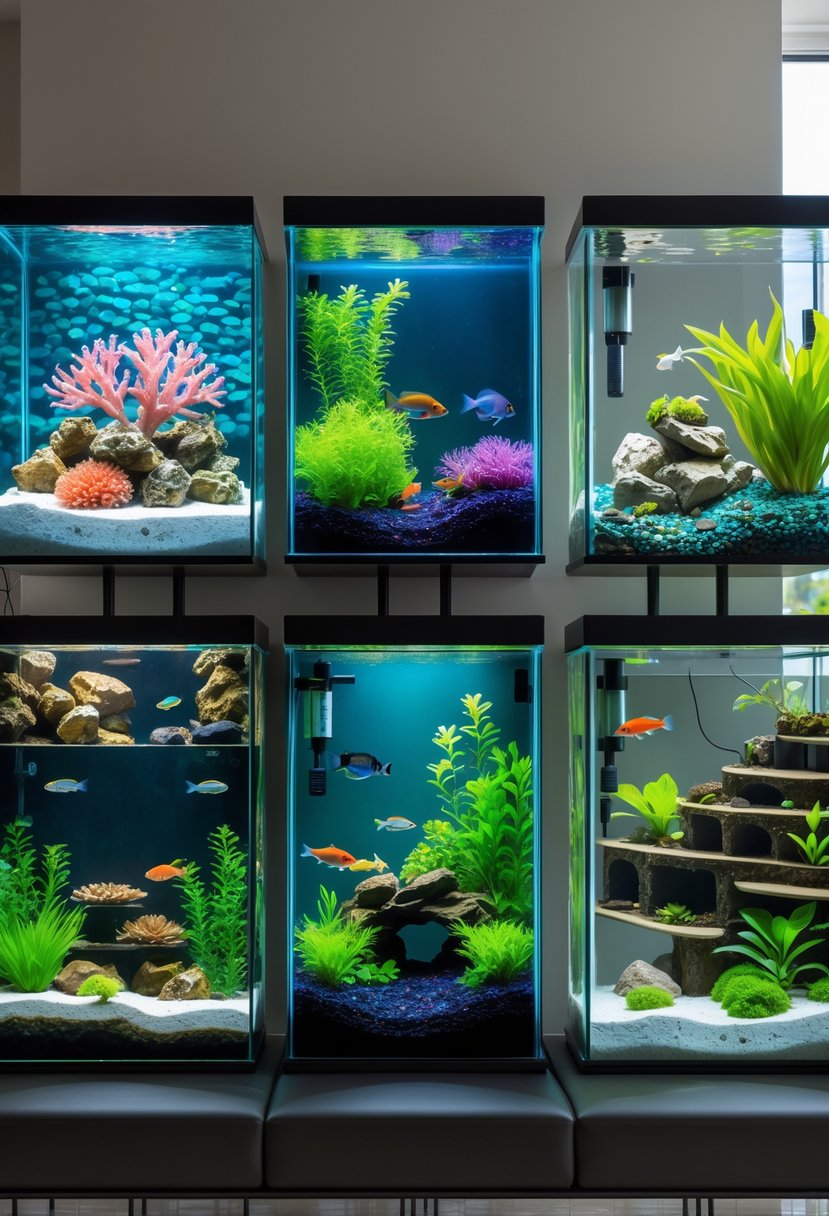
This article shares seven different fish tank ideas to help readers choose a setup that works well for their home and their needs. These ideas aim to combine function and beauty to create an appealing environment for both fish and owners.
1) Minimalist Mason Jar Aquarium with Betta Fish
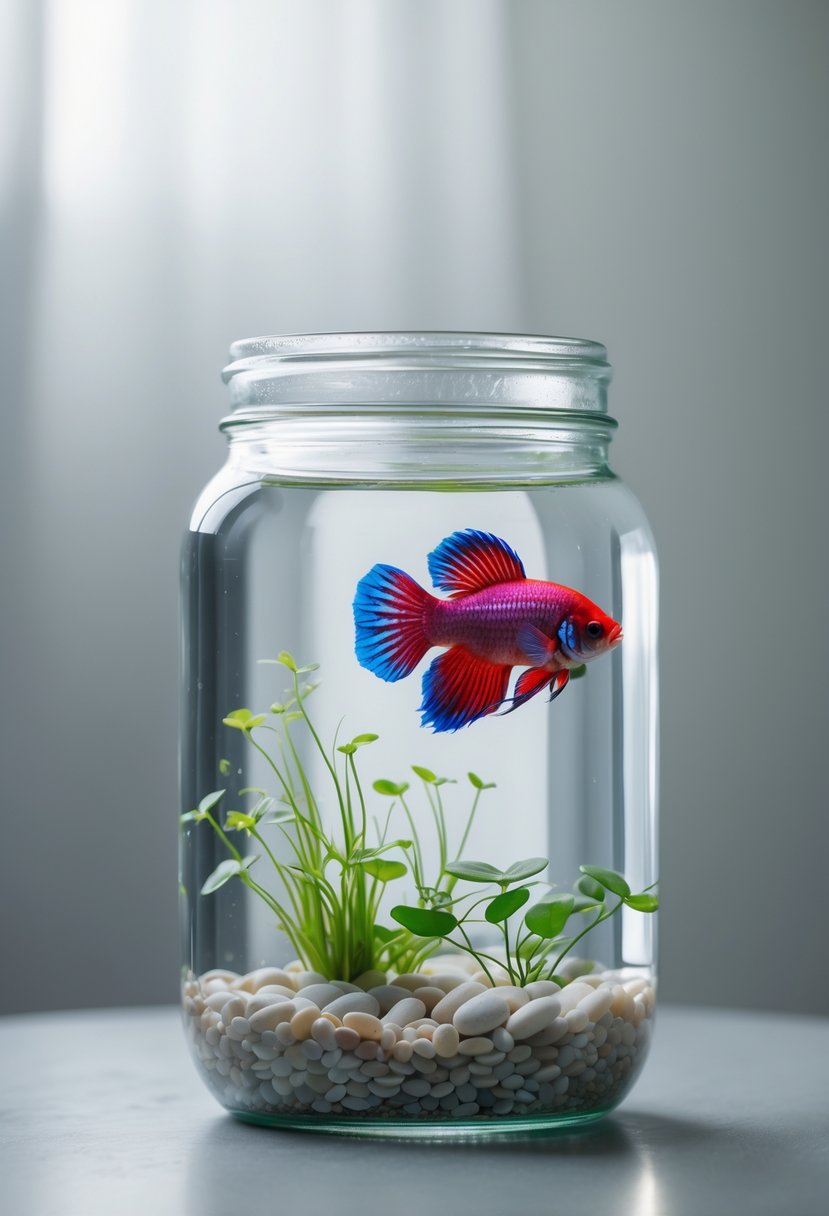
A minimalist Mason jar aquarium uses a small clear jar to create a simple fish home. It holds clean water, colorful pebbles, and tiny aquatic plants.
This setup works well for betta fish because it offers enough space without crowding. It suits small spaces and keeps maintenance easy.
2) Tropical Community Tank with Colorful Fish

A tropical community tank features many bright, small fish that live well together. These fish add color and life to the aquarium without needing large tanks.
Common choices include tetras, guppies, and corydoras. They thrive in similar water conditions and usually do not show aggression.
This tank setup works well for beginners and experienced keepers who want a lively, peaceful aquarium.
3) Zen Garden Aquarium with Smooth Stones and Bamboo
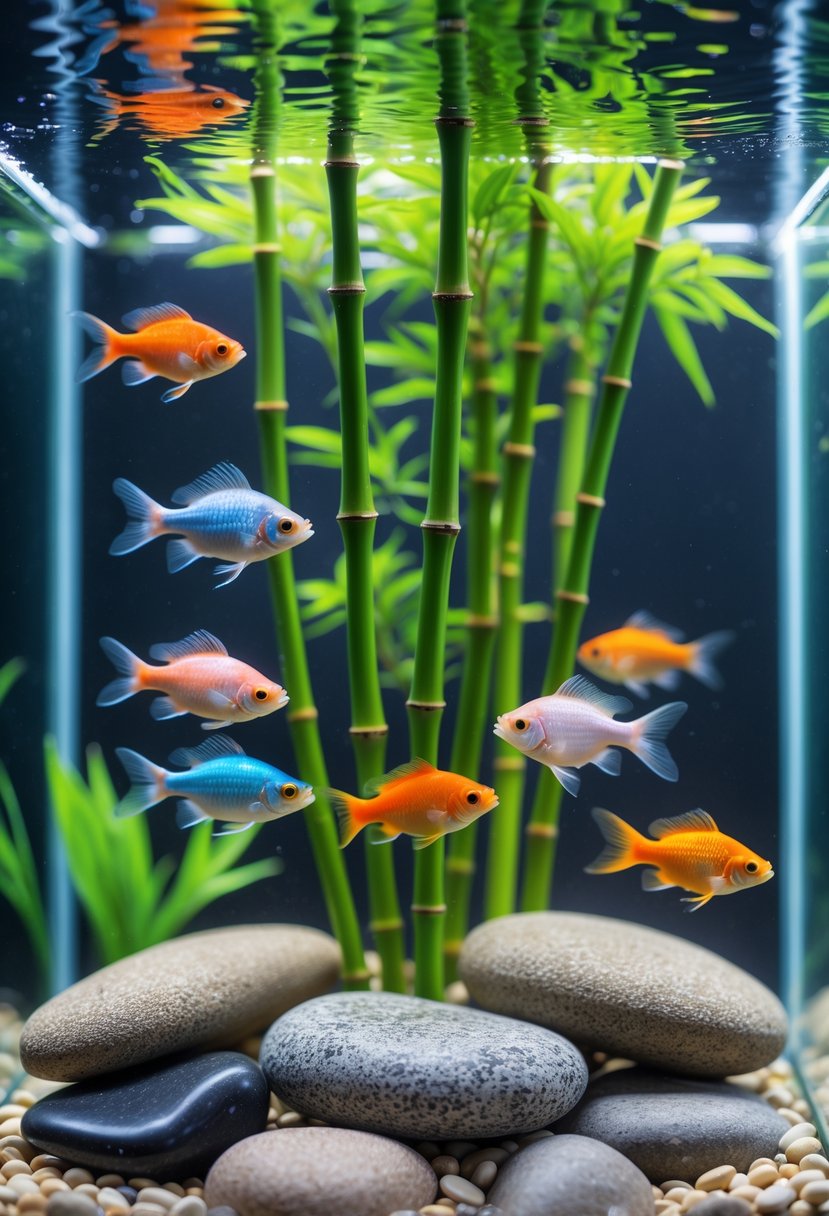
This aquarium style uses smooth stones to create a calm and natural look. Bamboo adds height and a peaceful vibe. The design focuses on simplicity and balance, avoiding clutter. Fish can hide among the stones, making the environment comfortable for them. The overall effect is a clear, quiet space that reflects Zen principles.
4) Wall-mounted Aquarium for Space-saving Display
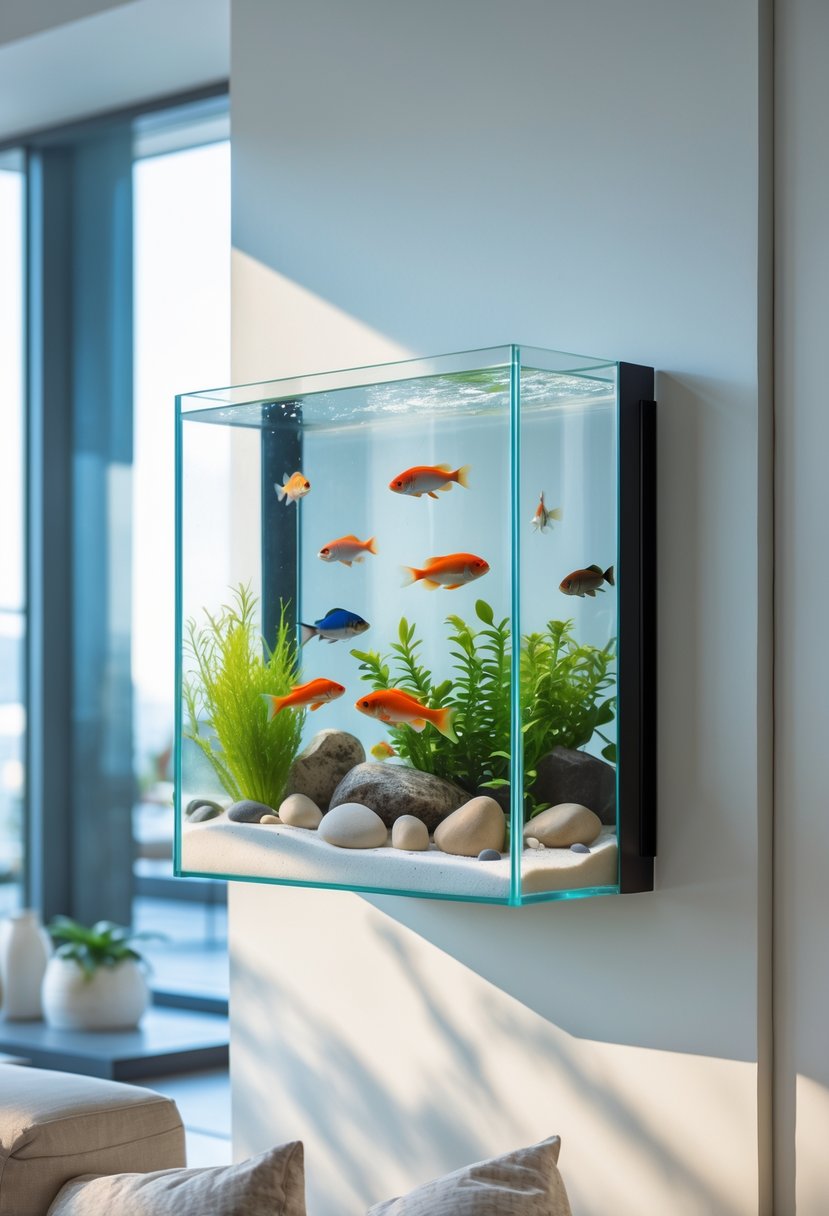
A wall-mounted aquarium is a good choice for small spaces. It can be installed at eye level, saving floor space.
This type of tank can add a modern touch to a room. It also creates a clear view of the fish without taking up much room.
It works well in narrow areas or between rooms, acting as both decor and a partition. Maintenance may require special care due to its mounted position.
5) Planted Tank with Amazon Sword and Java Fern
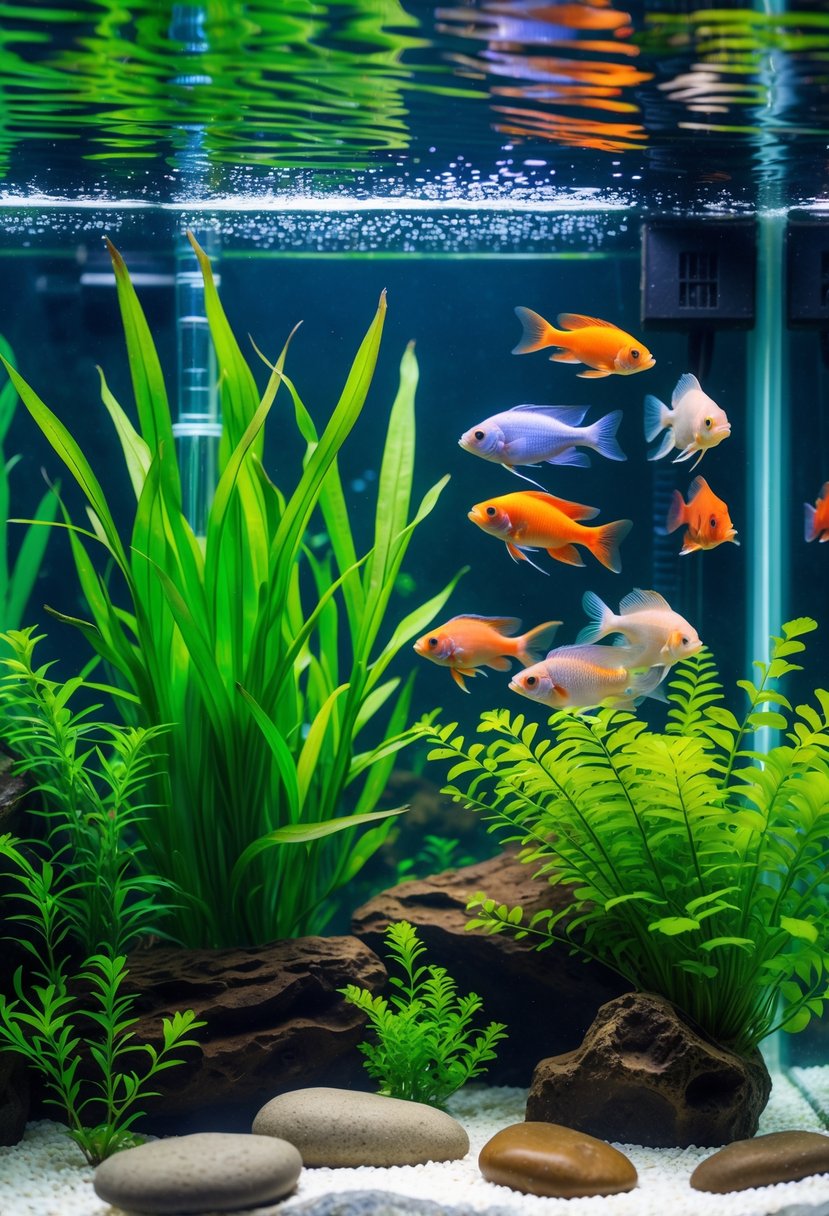
This tank features Amazon Sword and Java Fern, both hardy plants. They do well in various water conditions and need low to moderate light.
Amazon Swords need nutrients, which can be provided with root tabs. Java Fern grows attached to rocks or driftwood, making it easy to place.
Together, they create a natural look and provide good shelter for fish.
6) Paludarium Combining Aquatic and Terrestrial Plants
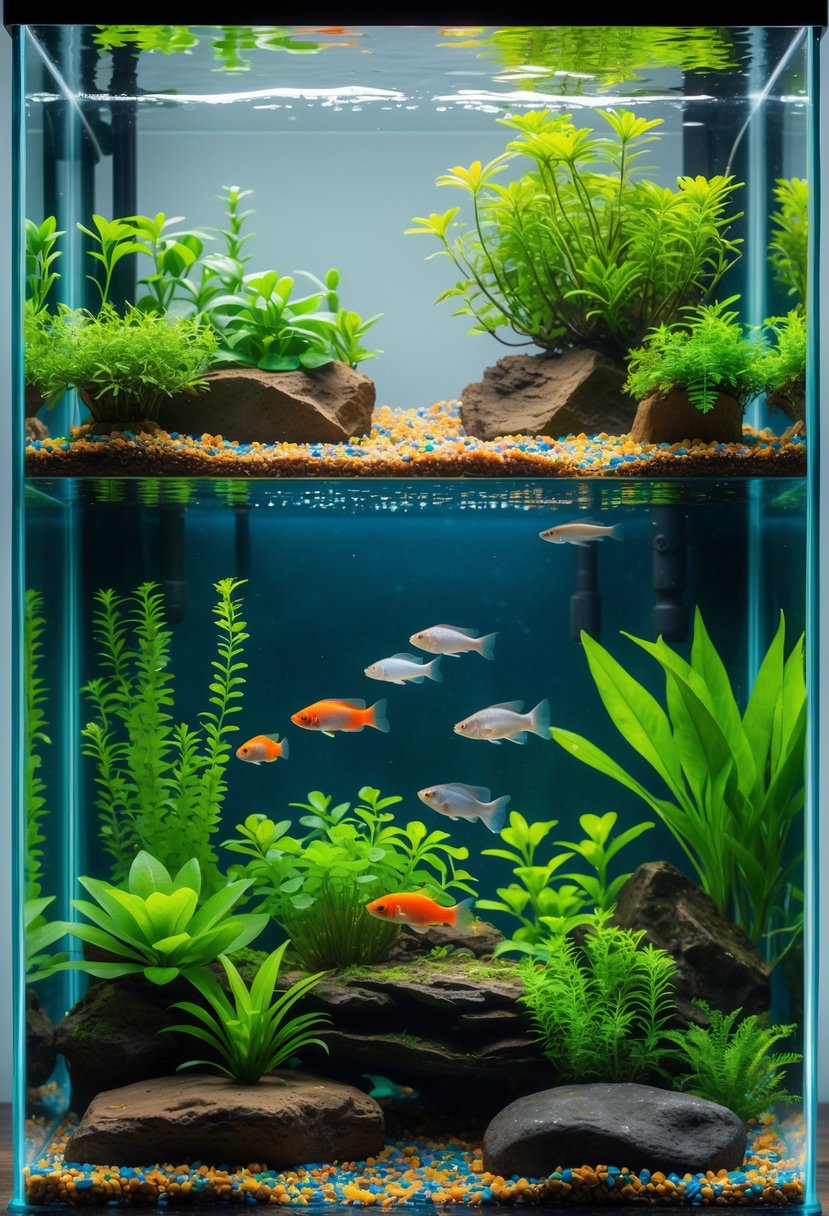
A paludarium blends water and land areas in one tank. It allows both aquatic and terrestrial plants to grow together.
The water section supports fish and aquatic plants. The land area holds terrestrial plants and sometimes semi-aquatic animals like frogs.
This setup creates a balanced ecosystem that shows both wet and dry environments.
7) Themed Aquarium Featuring Spongebob Decorations
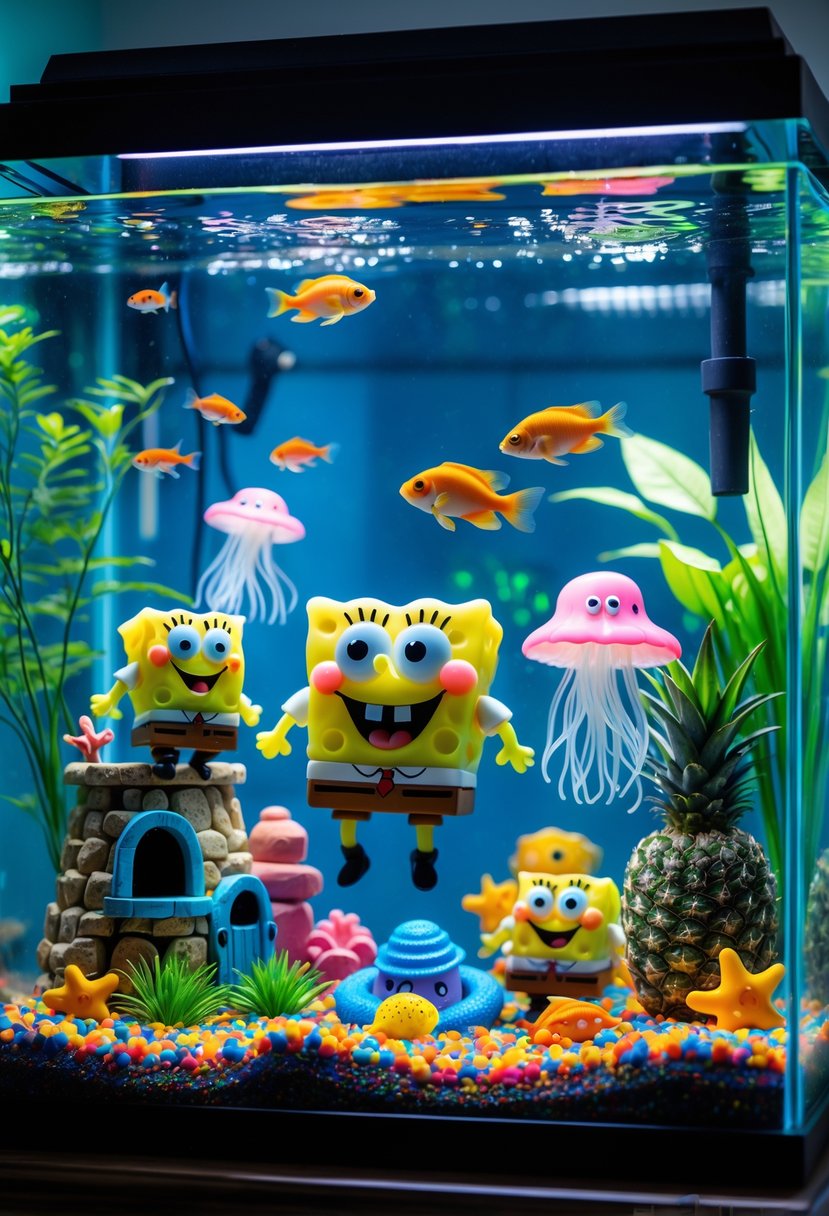
A Spongebob-themed aquarium can bring fun and color to any fish tank. It often includes decorations like Bikini Bottom landmarks and character figures.
Adding bright plants and colorful backgrounds inspired by the show helps create a lively underwater scene. These elements make the tank more interesting for both fish and viewers.
Design Principles for Fish Tanks
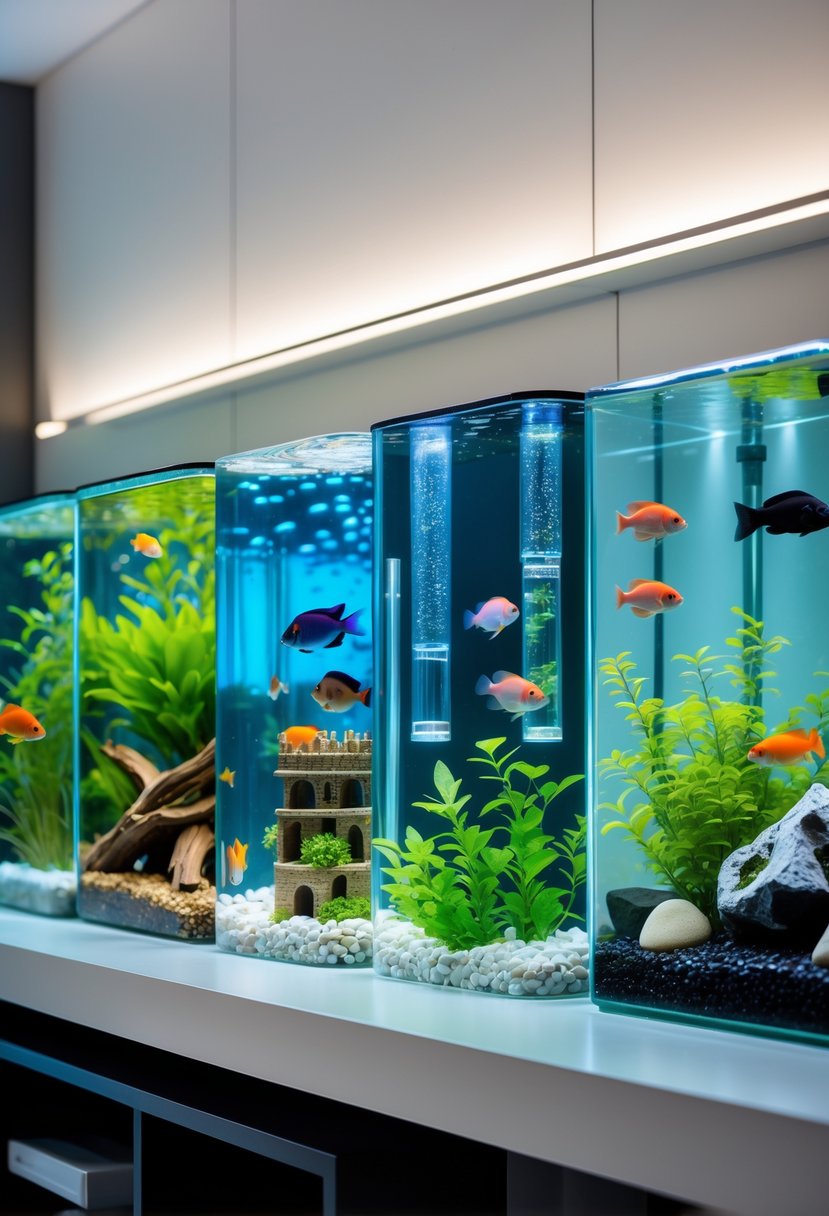
Good fish tank design blends visual appeal with a healthy environment for fish. Attention to layout, materials, and space helps create a balanced aquarium that supports aquatic life and looks attractive.
Balancing Aesthetics and Fish Health
Design must balance how the tank looks with what fish need to stay healthy. Proper spacing and hiding spots reduce fish stress and aggression. Plants, rocks, and decorations should allow enough swimming room and water flow.
Using a mix of colors, shapes, and sizes creates interest without overcrowding. Avoid sharp objects that might injure fish. Lighting should highlight tank features but not cause excessive algae or harm fish.
Maintaining a clear focus in the layout, like a main decoration or plant group, helps keep the design clean. Proportion matters; bigger decorations can be placed in the back or center to draw attention without overwhelming the tank.
Choosing Compatible Materials
Materials in the tank must be safe for fish and aquarium use. Natural stones like slate, granite, or aquarium-safe wood are good choices. Avoid rocks that release harmful chemicals or raise water hardness.
Substrates such as sand or gravel should suit the fish species and plants. Some fish prefer soft sand, while others need gravel for rooting plants.
Decorations must be non-toxic and free of paint or coatings that can leach into water. Always rinse new materials in warm water without soap. Avoid metals or plastics not designed for aquariums to prevent water contamination.
Key materials to avoid:
| Material | Reason |
|---|---|
| Limestone | Raises pH and hardness |
| Painted decor | Can release toxins |
| Metals | May corrode and harm fish |
Maintaining a Healthy Aquatic Environment
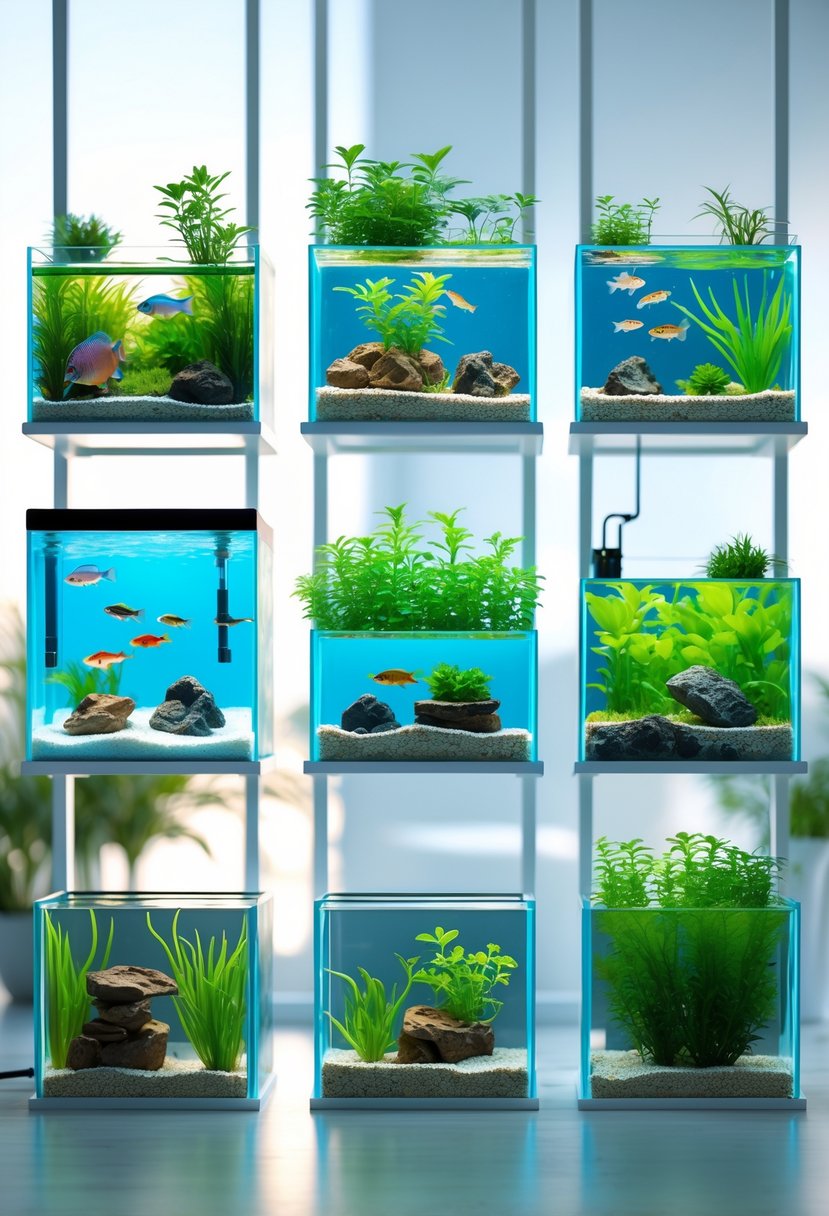
Keeping a fish tank healthy involves careful control of water conditions and the tank’s physical setup. Proper water quality and stable temperature and lighting help fish stay active and reduce stress.
Water Quality and Filtration
Water quality is the foundation of a thriving aquarium. The tank should have a good filtration system to remove waste, toxins, and excess food. Filters can be mechanical, biological, or chemical, and often a combination is best.
Regular water changes are crucial. Changing 10-20% of the water weekly keeps nitrate levels low and prevents harmful buildup. Testing water parameters like pH, ammonia, nitrite, and nitrate levels helps detect problems early.
Avoid overfeeding, as uneaten food decays and harms water quality. Removing debris and vacuuming the substrate helps reduce waste. A balanced filter and maintenance routine ensures a safe, stable environment for fish.
Lighting and Temperature Considerations
Proper lighting supports fish health and helps aquatic plants grow. The amount and type of light depend on the species in the tank. Too much light may cause algae growth, while too little affects plant growth and fish behavior.
Most tropical fish need water temperatures between 75°F and 80°F (24°C-27°C). Heaters with thermostats keep the temperature stable. Sudden temperature changes stress fish and can lead to illness.
Using timers for lights helps mimic natural day-night cycles. Monitoring the tank daily ensures temperature and lighting stay consistent, which supports a healthy tank environment.
